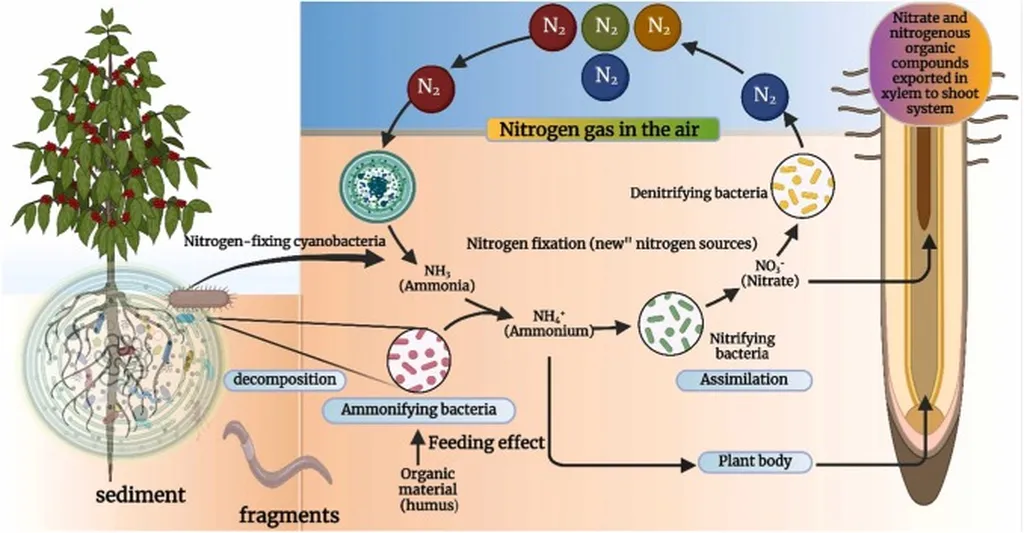In the heart of the Sundarbans, a mangrove forest spanning India and Bangladesh, researchers have uncovered a promising new source of antioxidants from an unlikely source: marine cyanobacteria. Pinaki Hazra, a State Aided College Teacher in the Department of Microbiology, has led a study that could have significant implications for the energy sector, particularly in the development of bio-based products with antioxidant properties.
The study, published in the journal “The Microbe” (originally published as “La Microbe”), focuses on the antioxidant activity of exopolysaccharides (EPS) from two halophilic marine cyanobacteria, Oxynema aestuarii AP24 and Euryhalinema mangrovii AP9F. These microorganisms, thriving in the saline waters of the Sundarbans, produce EPS that have shown remarkable antioxidant properties in vitro.
“Oxidative damage to cell machinery by unessential formation of oxygen free radicals in excess has a significant role in many human diseases,” Hazra explains. “Natural products with antioxidant properties have the capability to reduce their generation or at least stop their advancement and metastasis in the organism.”
The EPS isolated from these cyanobacteria demonstrated significant antioxidant activity, with EPS from AP24 showing an IC50 value of 564±1.393μg/ml in DPPH scavenging activity, compared to 391.85μg/ml for ascorbic acid, a standard reference compound. The EPS from AP9F also showed notable activity, with an IC50 value of 769.01±1.759μg/ml.
The study also revealed impressive water and oil holding capacities for the EPS, with AP9F showing a water holding capacity of 217% and an oil holding capacity of 204.5%. These properties could make them valuable in a range of applications, from food additives to bio-based materials.
The commercial potential of these findings is substantial. As the energy sector increasingly turns to bio-based products, the discovery of new sources of antioxidants could open up new avenues for research and development. The EPS from these marine cyanobacteria could be used to create more sustainable and environmentally friendly products, reducing our reliance on synthetic antioxidants.
Moreover, the study’s findings could pave the way for further research into the bioactive compounds of cyanobacteria. “The detailed study of the EPS from both the strains will add significant value in the research field of bioactive compounds of cyanobacteria in the future,” Hazra notes.
This research not only highlights the potential of marine cyanobacteria as a source of antioxidants but also underscores the importance of exploring the vast biodiversity of our planet for solutions to pressing global challenges. As we grapple with the impacts of climate change and the need for sustainable energy, the discoveries made in the Sundarbans could be a beacon of hope, guiding us towards a more sustainable future.

